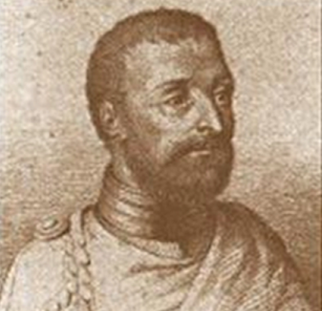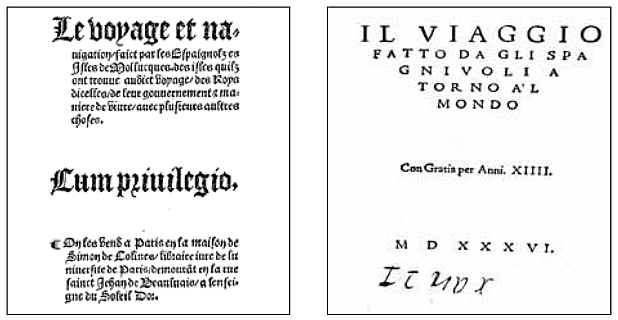As discussed in Part 15 last week, what became the predominant narrative among mid-17th century historians was Italian geographer Giovanni Battista Ramusio’s garbled version that the First Mass in the Philippine archipelago took place not in Mazaua but “in the island of Butuan.”
No one in 17th century Europe called attention to Ramusio’s inadvertent fudging of the First Mass site. In 1601, however, Spain’s colonial historian and official chronicler of the Indies, Antonio de Herrera y Tordesillas, affirmed Pigafetta’s account that the first Holy Mass indeed took place in Mazaua. Fr. Francisco Colin, S.J., in good faith took it upon himself to resolve the conflict between Pigafetta’s account and that of Ramusio’s.
Fr. Colin disliked the linguistic quirk in Ramusio’s “Messana” because that placename had a religious connotation:
“missa” is Spanish for “mass,”
“na” is Bisaya for “already.” To eliminate the inconsistency, he invented the word “Dimasaua”—meaning “not” Mazaua—as the island in Leyte where the first Mass took place. Fr. Colin did not accidentally misspell it as one of his Jesuit defenders would much later claim to defend his peculiar choice of that name.
But about four years later, in 1664, another Spanish Jesuit priest, Fr. Francisco Combes, S.J., (1620 – 1665), came up with another name for the island where the first Holy Mass took place. In his
“Historia de Mindanao y Jolo,” Fr. Combes wrote—without citing any source or attribution—that the Magellanic fleet’s stopover island in Leyte was called “Limasaua.” He then spun off an evidently new account of Magellan’s sojourn in the archipelago based on Samuel Purchas’ English translation of Ramusio’s garbled version of Pigafetta’s chronicles.
The Purchas version made no reference at all to the Easter Mass of March 31, 1521 and only mentioned the planting-of-a-cross rite on a hill. So, unlike Fr. Colin, Fr. Combes was not obligated to negate the idea that Mazaua was the site of the First Mass. On a personal hunch, he just decided to replace the prefix “Di-” in “Dimasawa” with “Li-“ to make it read as “Limasawa.”
The subjective accounts of Fr. Colin and Fr. Combes were taken seriously by certain history writers in Europe because the two Jesuits had first-hand experience as missionaries in the Philippine archipelago. In the case of Fr. Colin’s
“Labor Evangelica,” its publication in Madrid in 1698 appear to have spurred the publication in Naples of a six-volume
“Grio del Mondo” (“A Voyage Around the World”) by a self-claimed globe-trotting Italian lawyer, Giovanni Francesco Gemelli Careri. One of his volumes told of his alleged first-hand experiences in the Philippines that were cleverly combined with an up-to-date overseas bibliography. His mix of autobiographic narratives with other authors’ writings was so incredibly farfetched to merit going into in this review. (
https://tinyurl.com/v6cb739c)
But as it turned out, Fr. Combes’ 1667
“Historia de Mindanao y Jolo” would cause an even more deleterious distortion of the First Mass story—even if posthumously. His inventive claim that Magellan had entered Philippine waters by the southern route through Siargao Strait became
de rigeur during the 18th and 19th centuries, influencing other writers to make similar unfounded claims.
Two centuries later, in 1897, Fr. Combes’ history was reissued in an edition edited by the Spanish Filipinologist Wenceslao Retana with the assistance of another Jesuit missionary, Fr. Pablo Pastells, S.J. (1846-1932). But Fr. Pastells, after he finished editing a three-volume reissue of Fr. Colin's
“Labor Evangelica” on his own initiative, realized that the Butuan Tradition was incorrect after all. Making a complete turnaround, he then appended this footnote to that new Colin edition: “Magellan did not go to Butuan. Rather, from the island of Limasawa he proceeded directly to Cebu.”
Thus did another stunning shift take place in the reckoning of the First Mass from the Butuan Tradition to Fr. Combes’ invented “Limasawa.”
(Next:
Getting our history right after 500 years – Part 17) July 22, 2021
Read this article online in
The Manila Times:
“Getting our Philippine history right after 500 years - 16”To listen to the audio version of this article, click the encircled double triangle logo in its online posting in
The Manila Times.
*********************************************************************************************
PICTORIAL HISTORY OF THE FIRST HOLY MASS IN MAZAUA
A PROFUSION OF WRONG AND INVENTED SITES FOR THE FIRST HOLY MASS. From the extant historical records, all it took was for a prominent 16th century European geographer’s misreading of Antonio Pigafetta’s chronicles of the Magellanic fleet’s 1521 sojourn in the Philippine archipelago to bewilder and mislead a long line of history writers, clerics, and translators worldwide over the next 500 years, triggering this historical conundrum that still hounds our country even today—Why was Mazaua as the First Mass site transmogrified into “the island of Butuan,” then into the invented island of “Dimasawa,” and ultimately into the providentially imagined but officially affirmed “Limasawa” island in Leyte?




